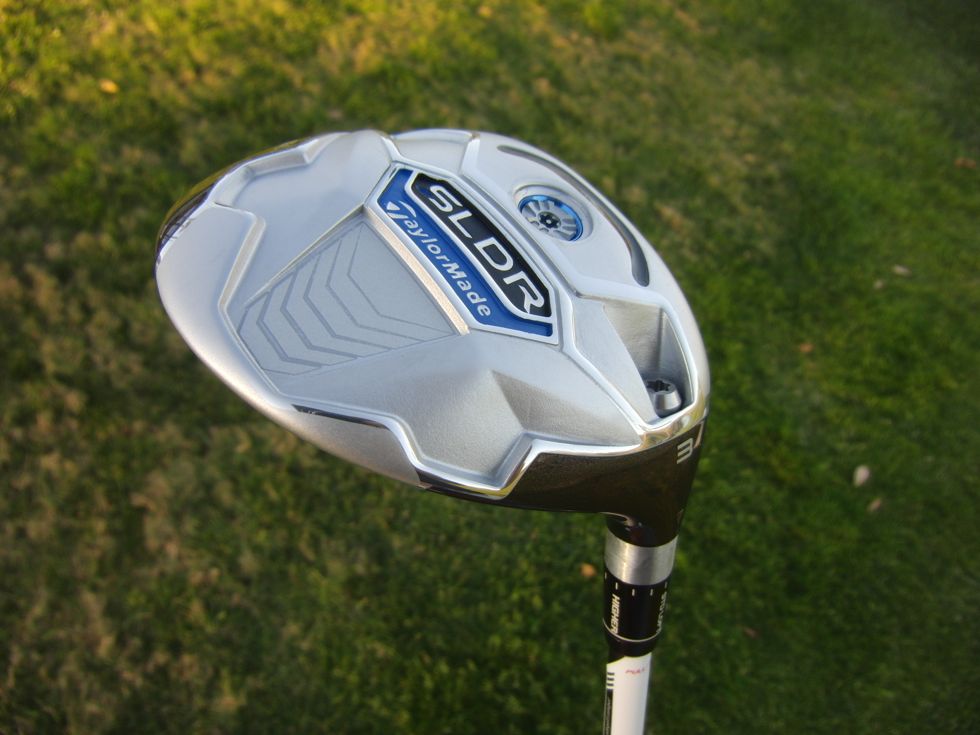 One of the most hyped family of clubs currently out there is the SLDR from TaylorMade. First came the driver with its signature movable weight that (yes) slides toward the toe or heel to adjust ball flight. This was not a new idea, as Mizuno and others had used a slide-able weight in the past. No, the real breakthrough technology in the SLDR family is the low-and-forward center of gravity (CG). And unlike the slider weight, the low-and-forward CG is found throughout the line, including in the fairway and rescue woods.
One of the most hyped family of clubs currently out there is the SLDR from TaylorMade. First came the driver with its signature movable weight that (yes) slides toward the toe or heel to adjust ball flight. This was not a new idea, as Mizuno and others had used a slide-able weight in the past. No, the real breakthrough technology in the SLDR family is the low-and-forward center of gravity (CG). And unlike the slider weight, the low-and-forward CG is found throughout the line, including in the fairway and rescue woods.
TaylorMade claims that the low-and-forward CG will let many players increase loft to achieve a higher launch with lower spin to promote maximum distance. This is a tantalizing prospect. In most parts of the U.S., golf remains an aerial game. Bandon Dunes and other truly firm and fast courses aside, players are almost always better off getting maximum carry rather than trying to run the ball along the fairway. Higher shots will land softer, giving us a better chance to hold the green and less chance of it running into trouble.
There is no denying that SLDRs are generating a lot of buzz. You can spot the chrome accent all over every PGA Tour broadcast, and probably at your club, as well. The rumor is that several manufacturers will be moving weight forward and low in upcoming models. Will this be the next big thing? Let’s take a look.
Technology
The headline technologies in both the SLDR fairway and rescue clubs are the Speed Pocket and the aforementioned low-and-forward CG.
TaylorMade has actually made the Speed Pocket in the SLDR smaller than the version featured in the RocketBallz clubs, which it claims makes the Speed Pocket more efficient at increasing the speed that the face flexes at impact. That, in theory, improves initial ball speed across a wider portion of the face, helping the player get consistent distances on most swings. In other words, TaylorMade is claiming that the smaller Speed Pocket makes the sweetspot bigger. Personally, I’d like a little more convincing of the physics behind this.
The removal of material to create the Speed Pocket helped TaylorMade move the clubhead’s CG lower and more forward, which is supposed to promote improved ball speed with a lower spin.
This is a new take on a common theme over the past decade. Most manufacturers have been removing weight from the crown and other parts of the clubhead and putting it low and back in the club. This weighting tended to make clubs (particularly drivers) higher launching and more stable. It also generally gave the club a more-forgiving quality, allowing somewhat off-center strikes to still fly reasonably straight with good distance.
Taylormade’s low-and-forward weighting puts more weight behind the ball at impact, like fairway woods were before all this moving around of weight began. In this case, however, the weight is low behind the face. It is pretty easy to imagine that this should result in a hotter launch, like hitting a baseball with a more solid bat. On the surface it would seem that the low weight should also launch the ball higher. I was very interested to find out what this weight shift would do to the launch angle, forgiveness, and overall distance of the club.
As for adjustability, the SLDR Fairways and Rescues lack the “slider” found in the driver that lets the golfer slide (go figure) a weight toward the toe or toward the heel depending on the shot shape they want to encourage or discourage. However, both clubs are equipped with the “Loft-Sleeve” (aka, adjustable hosel, I’m always entertained by the way TaylorMade names technology), which allows for loft changes of plus or minus 1.5 degrees.
Esthetics
The glaring white and bold graphics of the R1 and RocketBallz are gone. The SLDR fairway and rescue, like the driver, are a more conservative (and pleasing to my eye) charcoal gray. The dark gray Fujikura Speeder shafts complement the clubhead, nicely. Though, I have rarely thought this recently about TaylorMade clubs, I think these look very sharp and all business.
TaylorMade has added just a single “item of flair,” a distinctive chrome accent on the back of the club, which makes the clubs easily recognizable on TV without sacrificing the more traditional appearance. The accent also serves as a secondary alignment cue. You can line up ball, alignment mark, and accent at address.
I would call the face color “bare steel.” TaylorMade calls it “titanium gray.” Either way, it contrasts nicely with the top of the clubhead and (again) aids alignment. Kudos to the TaylorMade designers (and marketers).
While there is quite a bit of technology showing on the underside of the clubhead, it’s still not as busy as some recent TaylorMade models have been. Naturally, none of this is visible at address so it would not bother me much if they’d painted flames on the bottom. A nice touch is that the Speed Pocket is now filled with a polymer that keeps the dirt out while leaving performance unaffected (the factory set weight and Loft-sleeve screw hole will still collect mud, however).
I got to test drive the 15-degree 3-wood in the non-TP version. At 155cc, its head is smaller than that of most 3-woods these days. To my eye, it does not look excessively small at address. In fact, it reminds me of the TaylorMade’s old 200 series, which were very good fairway woods, indeed.
I was very pleased to see that the size of the rescue clubhead is reduced from what we have typically seen in recent years. I don’t want my hybrids to approach the size of my fairway woods. Hybrids are made to play like irons, and the bloated versions tend to encourage players to swing them like drivers with an ascending strike, leading to topped shots and worse. Rescues, and even fairway woods, are best played with a slightly descending impact.
Playability and Feel: Fairway
The most important aspect of any club is how it plays, and these play pretty darn well. The low-and-forward center of gravity seems to do what it is advertised to do. The ball jumps off the face of the fairway.
When you hit the center of the clubface, you do not have to guess about whether you made good contact. The fairway delivers a softer and stable feel with center hits, and the ball rockets off at higher trajectory than with near misses (popups not withstanding).
Off-center strikes are punished, but not too severely. Distance takes a slight hit (~10 yards) on near misses, more on truly bad contact, especially off the heel.
When I had the loft set at the standard 15 degrees, I found the club to be long, but a little obstinate. The launch was lower than the 3-wood I have been playing and carry distance suffered. This would not matter that much on firm courses, the roll out would make up for this, but on soft courses it would suffer. Off the tee and on the occasional ball that I hit really squarely, the SLDR was a long club… 5-10 yards longer than my usual 3-wood. But on most off-the-deck shots on less than firm fairway, it averaged several yards less. That was all due to the launch and carry distance.
A player with a faster swing speed (I’m typically around 105 mph with a driver) might generate a little more spin and lift to carry farther. This is one case where the low spin characteristics work against you.
But then I remembered the loft sleeve.
When I increased the loft by 1.5 degrees, the SLDR suddenly developed a better attitude. At 16.5 degree the SLDR was one amazingly long 4-wood. The ball flight was much improved, much more like my typical 3-wood flight, but I didn’t lose much distance at all.
The Fujikura Speeder is one stout shaft. I have enjoyed playing Speeders in the past, but this made-for-TaylorMade version does not have the firm smoothness that I recalled in the past. Happily, it did perform pretty well. Even though it seems to be stiffer than I’d expect, it did not promote an unwanted cut as an overly stiff shaft would. It is a quarter-inch longer than most 3-wood shafts play. You adjust pretty quickly to a quarter inch, but it will make it ever so slightly harder to hit the center of the clubface.
Playability and Feel: Rescue
The SLDR Rescue produces a somewhat harsher, but still solid-feeling smack at impact. The club provides plenty of feedback to let you know when you have and haven’t hit it well. But the biggest indication of the quality of impact is ball flight. Better strikes fly higher, which is as we’ll see important with the SLDR Rescue.
Hybrids should be easier to hit than irons and more accurate than a fairway. I expect a measure of help from a hybrid, let alone a club called a “rescue.” Hybrids help you get the ball in the air and to carry it farther. That is their mission. At the same time there are game-improvement hybrids and better-player hybrids. The SLDR Rescue definitely fits in the latter category. Like a casual friend when you’re moving, when push comes to shove it may not be as much help as you’d hoped.
Off-center shots are penalized more with the rescue than with the Fairway. Near misses lose 10 yards or more, and if you really miss, well, you get what you deserve. While toe shots fare slightly better than those off the heel, both are firmly punished. The SLDR Rescue is not going to put lipstick on a pig for you, but good contact is rewarded well. Naturally, the higher lofted rescues will offer more forgiveness.
Contributing to mis-hits is TaylorMade’s insistence on lengthening the stock shaft length. The SLDR Rescue’s shaft is 0.75″ longer than most other hybrids of the same loft. Basic rules of physics say that the longer the shaft, the harder it is to put the clubface squarely on the ball.
Sure, when you hit it right, the rescue gives you added distance. I hit a few that approached 3-wood distance (and I hit some that were more like 8-iron distance, too). To a degree, you will adjust to the shaft length, but it permanently increases the degree of difficulty over a normal length shaft. Happily, shafts can be shortened.
Second, and just slightly less of an issue to me, is the ball flight. Even more so than the fairway, at its native loft the rescue tended to hit the ball lower than other clubs of the same loft. After I’d notched it up a degree and half using the Loft-Sleeve, I started to hit more hybrid-like ball flights. I found that with a SLDR, basically the higher I hit it the farther it flew.
That could be useful at times, but with that long shaft, making consistent contact (and hence achieving higher ball flight) is difficult. The difference between a well struck low ball flight and a pured high ball flight might mean hitting the front of a green and leaving an uphill putt or flying it all the way to the back fringe on medium-sized green.
Even when I made good contact and thus ball flight, I found that hitting the target with that long shaft fairly difficult. I was right or left, but seldom right on. It is simply much more difficult to be accurate with that long shaft. My “normal” length hybrid was more accurate.
While the shaft length negatively affected my consistency, I did pull off some shots that made me wonder about the club’s potential with a shorter shaft. In theory, that should make it more accurate. Best of all the shorter length should also make center contact easier to achieve, and the subsequent better contact might just result in distances closer to what you would get out of the longer shaft.
Specs
The SLDR Fairway is available in 14 (“tour spoon”), 15 (3), 17 (3HL), 19 (5), and 21 (5HL) degree models with the Fujikura Speeder 77 in R, S, or X for $249.99. Your SLDR Fairway can be customized with the Speeder 57, the Matrix VeloxT 49, or VeloxT 69. Upgrading to the TP model will run you an extra $100 to upgrade to the Fujikura Motore Speeder TS 8.3 in R, S, or X. You also have the option to substitute from a much larger selection of other popular shafts, though an upcharge may apply. Either fairway can also be customized to the length you want. Unlike with past TP models, the only difference between the TP and regular SLDR is the shaft options.
The SLDR Rescue runs $219.99 and comes in 17 (#2), 19 (#3), 21 (#4), and 24 (#5) degree lofts with a Fujikura Speeder 82 in R, S, or X. Once again TaylorMade gives you the opportunity to choose a different shaft, many of which have an upcharge, from $8 for Dynamic Gold steel to $39 for Matrix Ozik Program 95. Shaft length can also be customized. Paying an additional $70 for the TP model gets you the same clubhead with a Fujikura Motore Speeder TS 9.3 in S or X, or your choice from among some eight other custom choices.
You can view the full specs for both the fairway and the rescue on the TaylorMade website.
Conclusion
I have to admit that I’m a little conflicted over these clubs. There is definitely something to the low-forward CG. The ball launches like a rocket, and it can be worked in either direction reasonably easily. But I also think it makes the clubheads a little less forgiving than other similar clubs, particularly the hybrid.
While there are more forgiving sticks in your local golf shop, I don’t think that’s really what the SLDRs are about, anyway. These clubs are hotrods, better suited to a drag race than a grand prix circuit. The combination of the stiffer-than-most shafts with hot clubheads make the SLDRs seemingly beg to be hit hard. Try to resist the urge to swing out of your shoes, though. That rarely works out well.
Players with higher clubhead speed at impact may be better suited to these clubs as they should produce more spin and achieve a higher ball flight. For the rest of us, we need a higher launch to keep the ball in the air long enough for it to reach maximum distance for all other inputs (clubhead speed, contact quality, etc.). I found that when I took TaylorMade’s advice to loft up, I was much more consistent about getting the ball on a proper trajectory. Best of all, even at the higher loft settings, the clubs carried farther and reached nearly the same distance you’d expect from their “normal” lofts.
I particularly liked the fairway wood set at the +1.5 degree setting. It was still long but relatively easy to hit off tight lies or from the tee. Basically, it’s a super 4-wood. This one might stay in the bag awhile. If you are looking at the SLDR, it might be a good idea to consider at the next higher loft in the line. The Loft-Sleeve will keep your options open to lower it, or further raise it, if you need to.
I think that I would enjoy the SLDR Rescue far better less 0.75″ off the butt end of the shaft than as tested. While I hit some really nice looking shots with plenty of distance, I found it much harder to put on target than I do my own hybrid. Length was also inconsistent. As long as this club is, you could easily surrender a few yards and it would be as long or longer than other hybrids of the same loft. I do think there are more forgiving hybrids out there in the better-player category, but the low-forward CG gives the SLDR an extra pop that most of those lack.
You will see a lot of SLDRs on the PGA Tour this spring, in part because TaylorMade pays the players to put them in the bag, but also because in the right hands these clubs can do some wonderful things that friendlier clubs just cannot do.

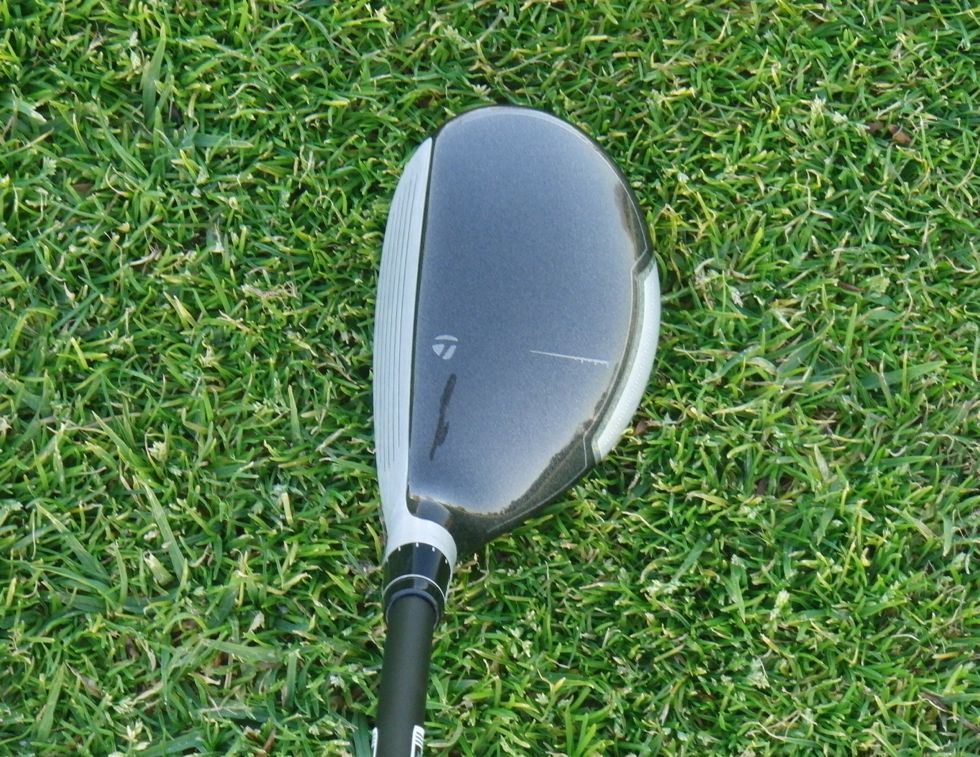

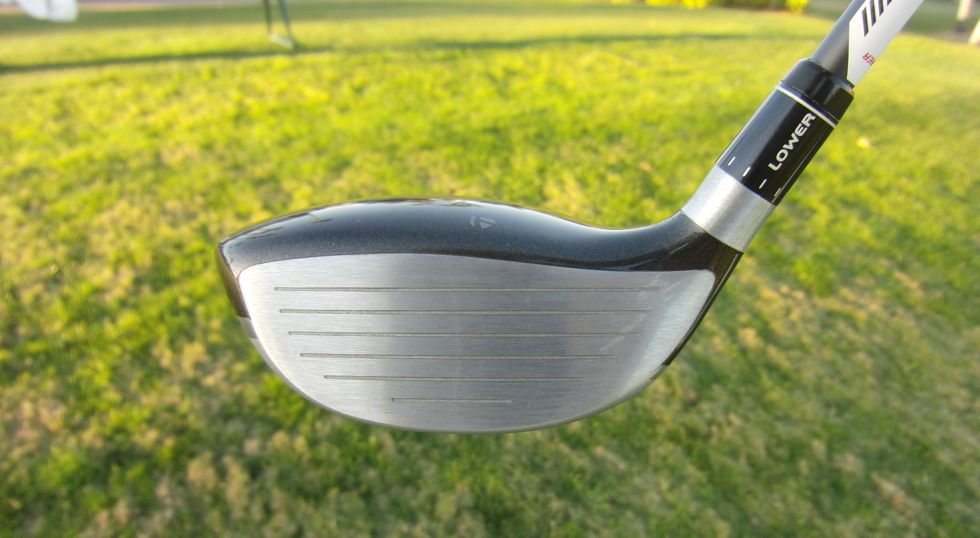
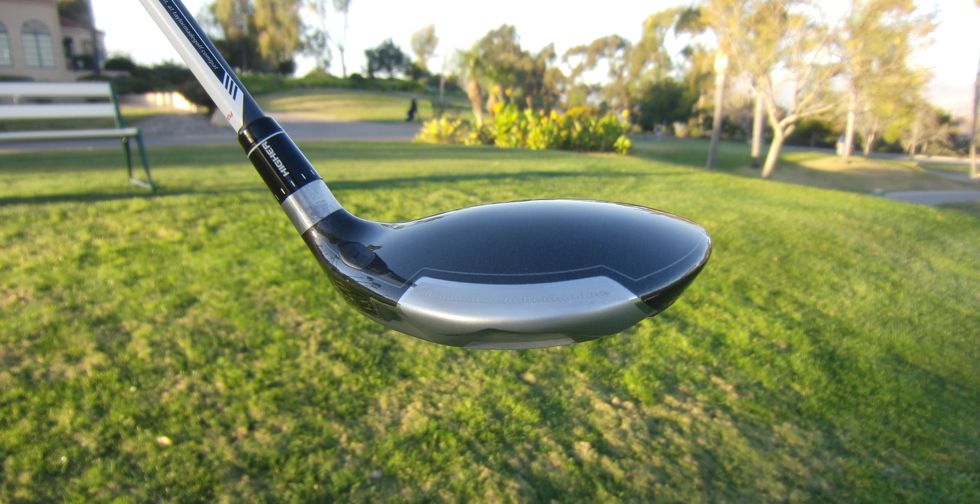
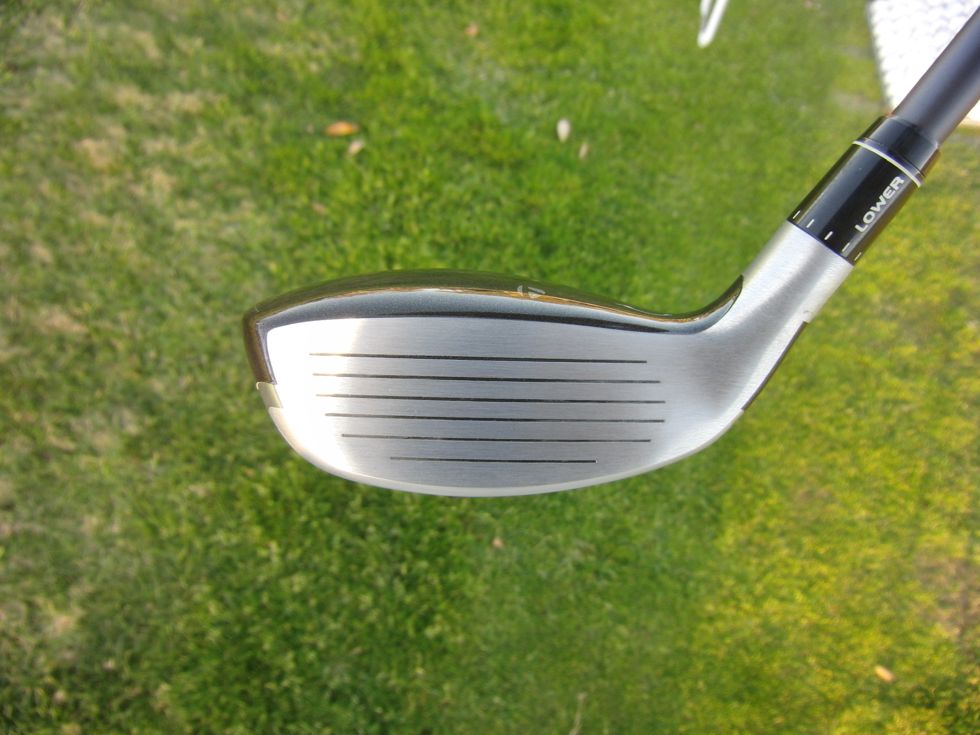
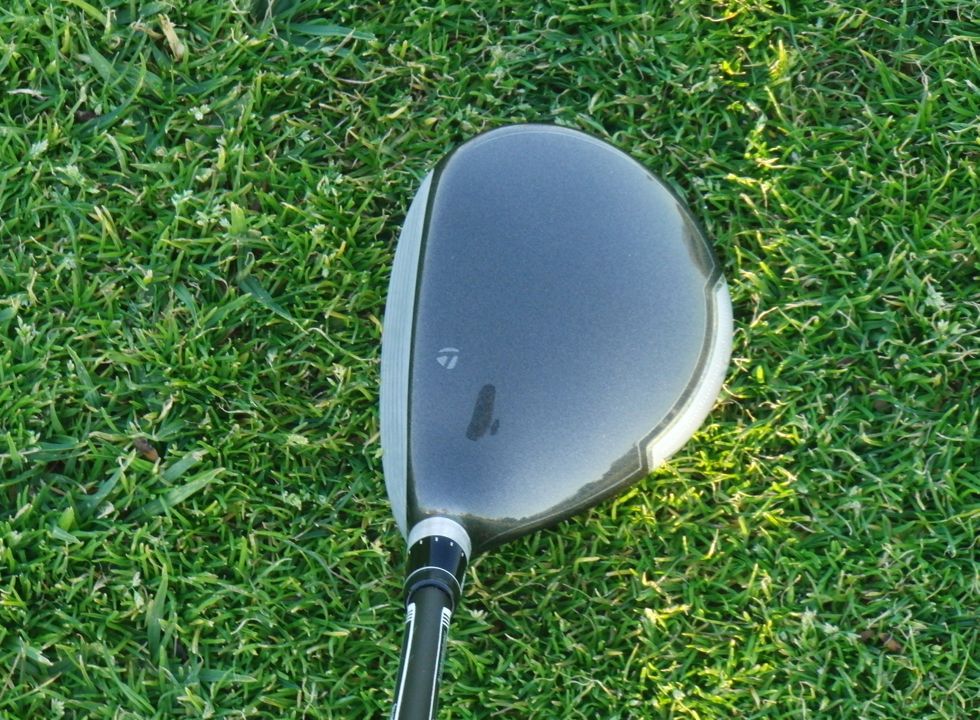
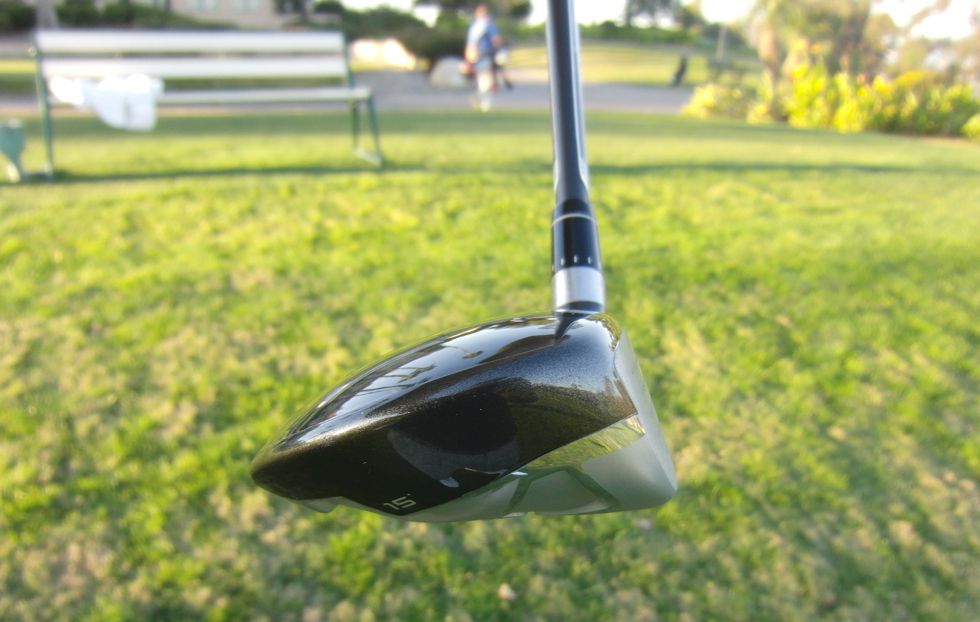
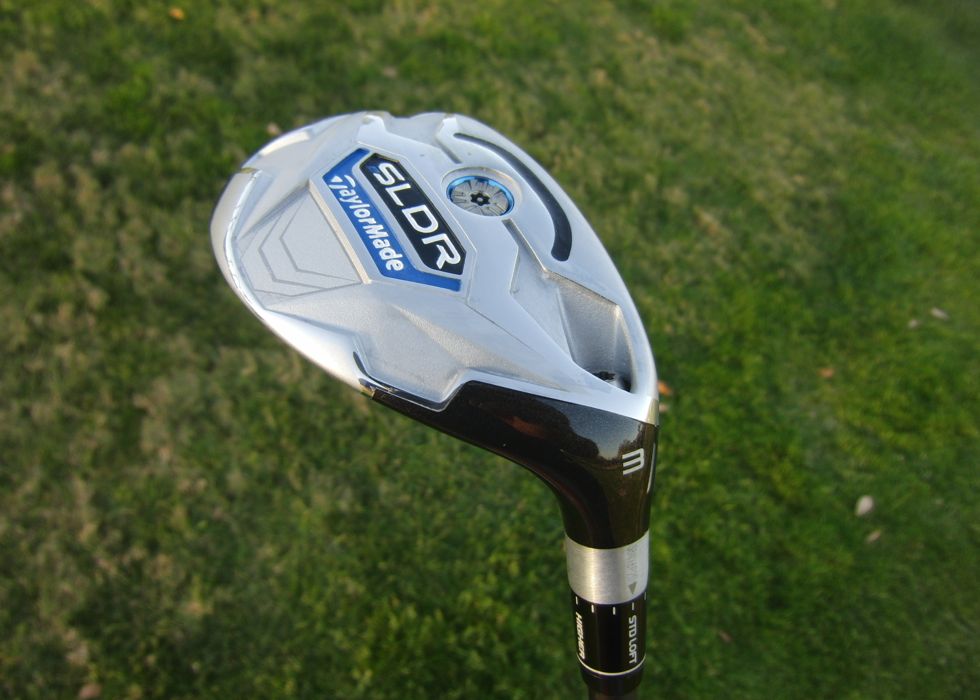
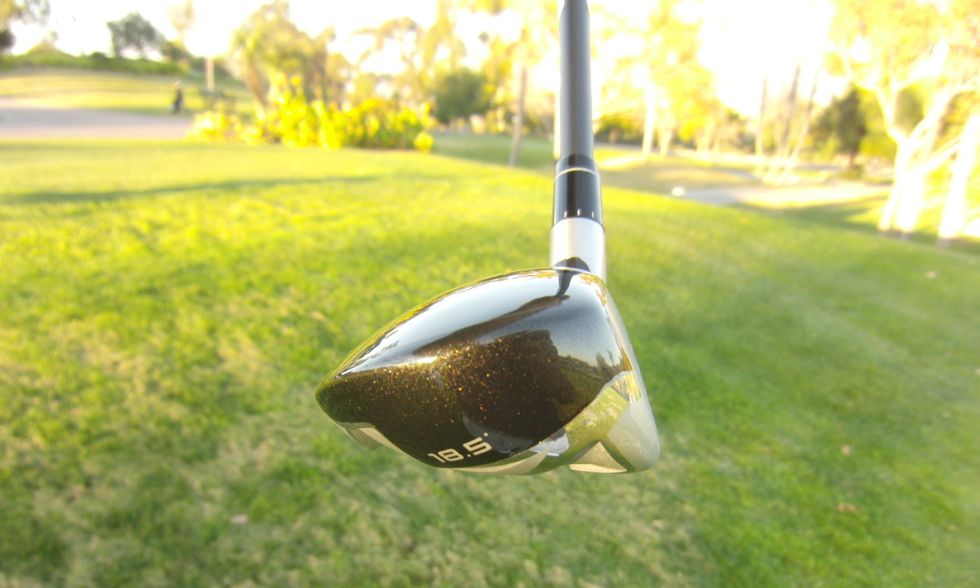
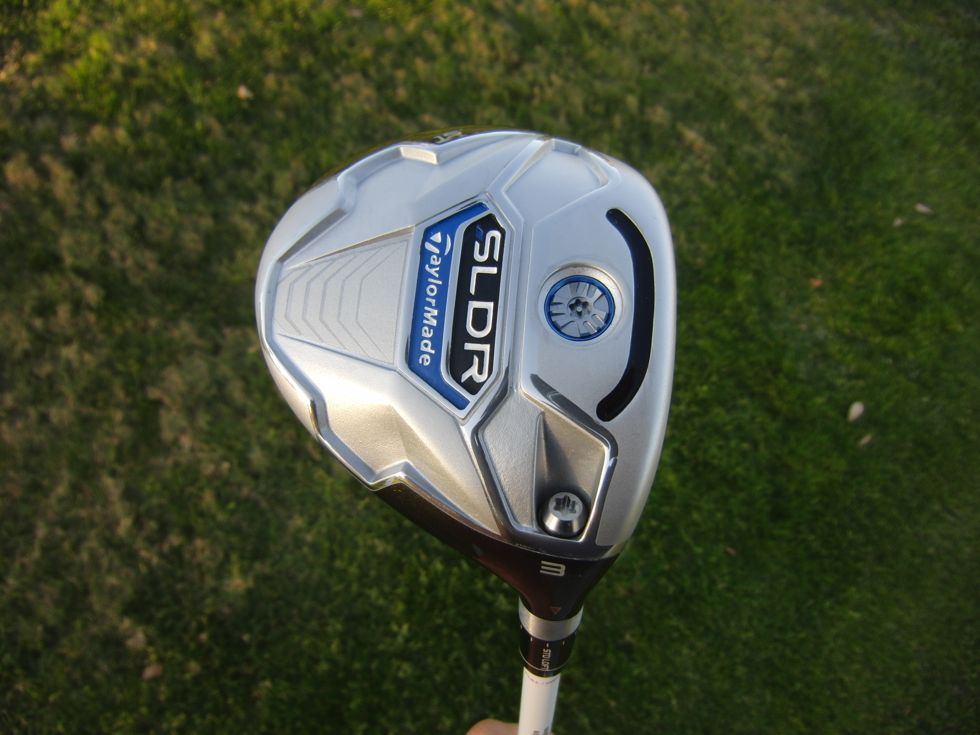
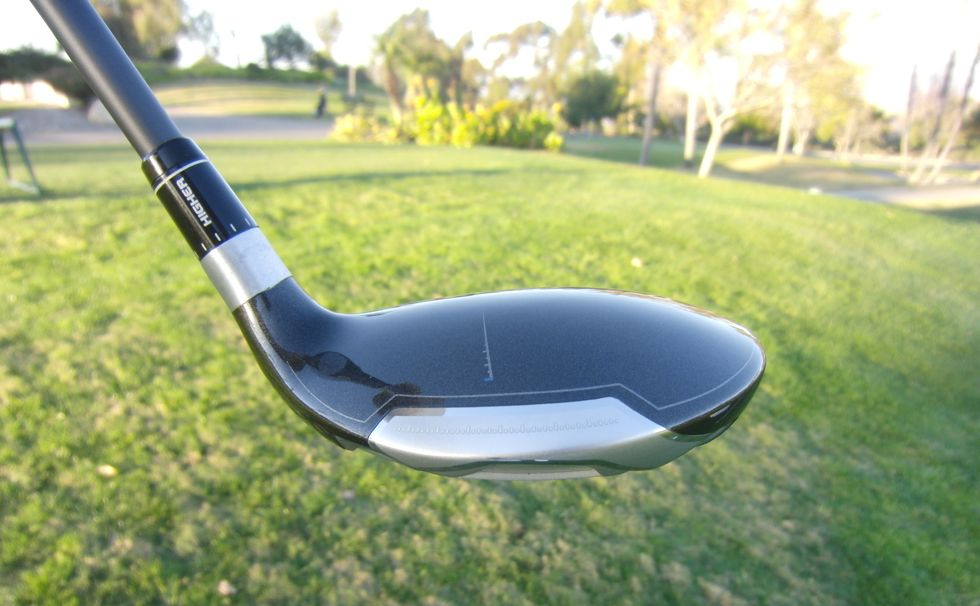
George – I currently carry the RBZ 3 wood and the RBX 3 hybrid. My next lower club is a R11 4 iron. If I wanted to add a SLDR wood, where would you recommend I make the addition? Would the 5 wood be a reasonable upgrade to my 3 hybrid?
eurosmitty: It’s difficult to guess how it would fit into your setup for sure. But the 5-wood would undoubtedly be longer than your hybrid, and probably a little less accurate (though people with a sweeping swing might do better with a wood). It depends on what your goal in upgrading would be. Do you need more distance out of the next longer club to your 4-iron or are you trying to replace the same distance? Or some other goal?
Your best bet would be to go to a pro shop or store where you can hit the SLDR alongside your clubs. That way, with your goal in mind, you can get a much better idea how well it will serve that purpose. Hope that helps.